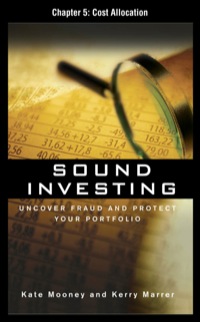Question
Luke Corporation produces a variety of products, each within their own division. Last year, the managers at Luke developed and began marketing a new chewing
Luke Corporation produces a variety of products, each within their own division. Last year, the managers at Luke developed and began marketing a new chewing gum, Bubbs, to sell in vending machines. The product, which sells for $5.25 per case, has not had the market success that managers expected, and the company is considering dropping Bubs.
The product-line income statement for the past 12 months follows:
Table 1
| Revenue |
| $14,682,150 |
| Costs |
|
|
| Manufacturing costs | $14,440,395 |
|
| Allocated corporate costs | 734,108 | 15,174,503 |
| Product-line margin |
| $ (492,353) |
| Allowance for tax (@20%) |
| 98,470 |
| Product-line profit (loss) |
| $ (393,883) |
All products at Luke receive an allocation of corporate overhead costs, which is computed as 5 percent of product revenue. The 5 percent rate is computed based on the most recent year's corporate cost as a percentage of revenue. Data on corporate costs and revenues for the past two years follow:
Table 2
|
| Corporate Revenue | Corporate Overhead Costs |
| Most recent year | $106,750,000 | $5,337,500 |
| Previous year | $76,200,000 | $4,221,000 |
Assume the fixed corporate overhead is $1,454,000 in each year. None of these fixed costs are specifically traceable to Bubbs.
Roy O. Andre, the product manager for Bubbs, is concerned about whether the product will be dropped by the company and has employed you as a financial consultant to help with some analysis. In addition to the information given above, Mr. Andre provides you with the following data on product costs for Bubs:
Table 3
| Monthly Production and Production Costs | ||
| Month | Cases | Prod. Costs |
| 1 | 207,000 | 1,139,828 |
| 2 | 217,200 | 1,161,328 |
| 3 | 214,800 | 1,169,981 |
| 4 | 228,000 | 1,185,523 |
| 5 | 224,400 | 1,187,827 |
| 6 | 237,000 | 1,208,673 |
| 7 | 220,200 | 1,183,699 |
| 8 | 247,200 | 1,226,774 |
| 9 | 238,800 | 1,225,226 |
| 10 | 252,600 | 1,287,325 |
| 11 | 250,200 | 1,241,760 |
| 12 | 259,200 | 1,272,451 |
Table 4 - Regression Analysis of Table 3 Data
Adjusted R-squared 0.957
| Variable | Coefficient | t | p>|t| | Significance | Std Err |
| Units | 2.236 | 15.71 | < .001 | *** | 0.1423 |
| Constant | 682,300 | 20.53 | <.001 | *** | 33,246 |
QUESTION: Assume the variable allocated corporate costs are $0.192 per case of Bubbs. Given methods used to compile Table 1, what would the price per case of Bubbs have to be for the product line margin to break-even. Assume no change in the number of units sold. You should apply allocated corporate overhead at the rate used by Lukes. Round to the nearest 0.001 per case.
Step by Step Solution
There are 3 Steps involved in it
Step: 1

Get Instant Access to Expert-Tailored Solutions
See step-by-step solutions with expert insights and AI powered tools for academic success
Step: 2

Step: 3

Ace Your Homework with AI
Get the answers you need in no time with our AI-driven, step-by-step assistance
Get Started


